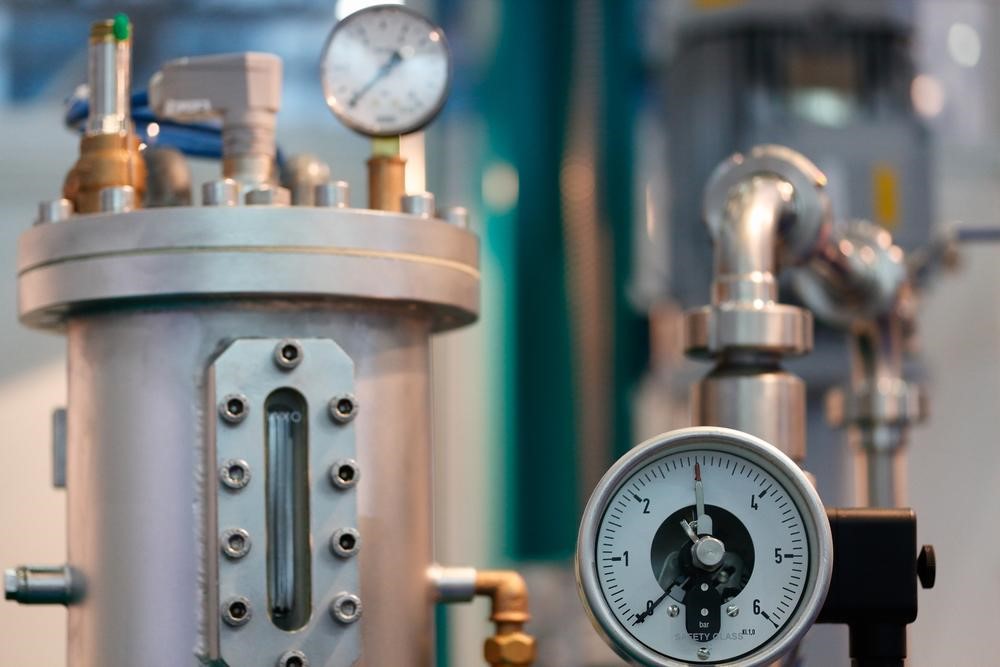Air compression provides clean, consistent energy for a wide variety of industrial uses, from mining to manufacturing. Depending on their application, air compressors can vary in cost and size. Matching the right air compressor to the right application is important, as it will maximise the efficiency and longevity of the compressor, saving a business money in the long-term.
The effectiveness of an air compressor will depend on several factors, including the amount of air pressure needed, whether it will frequently stop and start and the required quality of compressed air.
Although there are variations, the two most common types of industrial air compressors are rotary screw air compressors and reciprocating air compressors.
Rotary screw air compressors
Rotary screw air compressors work by drawing air into a chamber and compressing it between a pair of matched helical screws. This method is much more efficient than using a piston and can create a constant and continuous source of air power. Rotary screw compressors are typically more powerful than reciprocating air compressors and are used in a wider variety of industrial applications due to their efficiency and durability.
Rotary screw air compressors are generally more heavy-duty machines and are better suited to delivering a continuous amount of high-pressured air, such as to power assembly line operations in factories or powering multiple air tools simultaneously.
Reciprocating air compressors
Reciprocating air compressors draw air into a chamber with pistons and then compress it by using one-way intake valves. Single stage reciprocating compressors draw air into a single chamber and compress it to approximately 120psi. In two-stage compressors, an additional step is taken where the air is compressed by a second, smaller piston to a higher pressure.
These types of compressors are better for smaller facilities and are often more portable. They are also better suited to tasks which require frequently stopping and starting. For this reason, reciprocating compressors are often found powering low-pressure or single use applications.
Oil and oil-free compressors
One of the biggest decisions to make when selecting an appropriate air compressor is whether to choose oil injected or oil-free.
Oil injected air compressors use oil to lubricate the compression chamber. This ensures that it functions at a consistent temperature and reduces overall wear and tear. Oil injected compressors are often cheaper than their oil-free alternatives, but the air that they produce will contain small particles of oil. In some instances, this can be beneficial, for example adding lubrication while powering air tools. In other circumstances the presence of oil or other particles in the air can be detrimental to a tool’s functionality, or contaminate clean environments.
Oil-free compressors use conventional methods to compress air such as rotary screw technology, but instead of using oil for lubrication they work exclusively with water from ambient air as a natural lubricant. This technology is an efficient and cost-effective way to produce a large quantity of high quality air. Oil-free compressors are favoured for applications in medical and scientific industries where air must be free from contaminants. They are also much quieter than typical oil injected air compressors.
Storing and filtering compressed air
Oil injected air compressors can still provide clean and high quality compressed air when fitted with an air-drying system. Air dryers use a variety of different methods to remove water vapour from the air and filter out other particles such as oil.
When considering an air dryer, it’s important to note that an air receiver tank is required to first store the compressed air. Both the air dryer and receiver benefit the customer by reducing wear and tear. The air dryer removes contaminants which can cause corrosion and the receiver tank allows for more efficient use of the compressed air. This means less frequent maintenance and less wastage of air and power.
Long term costs
While purchasing an industrial air compressor can present a high up-front cost, investing in the long-term quality of the equipment will reduce running costs and save money in future.
Energy consumption is one of the larger costs involved in running an industrial air compressor. For this reason, it’s best to consider your output requirements for your compressor and select the most efficient model.
Maintenance is another long-term cost to be aware of when using compressed air technology. The upfront cost of equipment such as air receivers and dryers will heavily reduce the frequency of maintenance and ensure a long and cost-effective product life for your air compressor.
Express Compressors are the experts in air compression technology and are always available to help. Contact us see how industrial air compressors can benefit your business.



